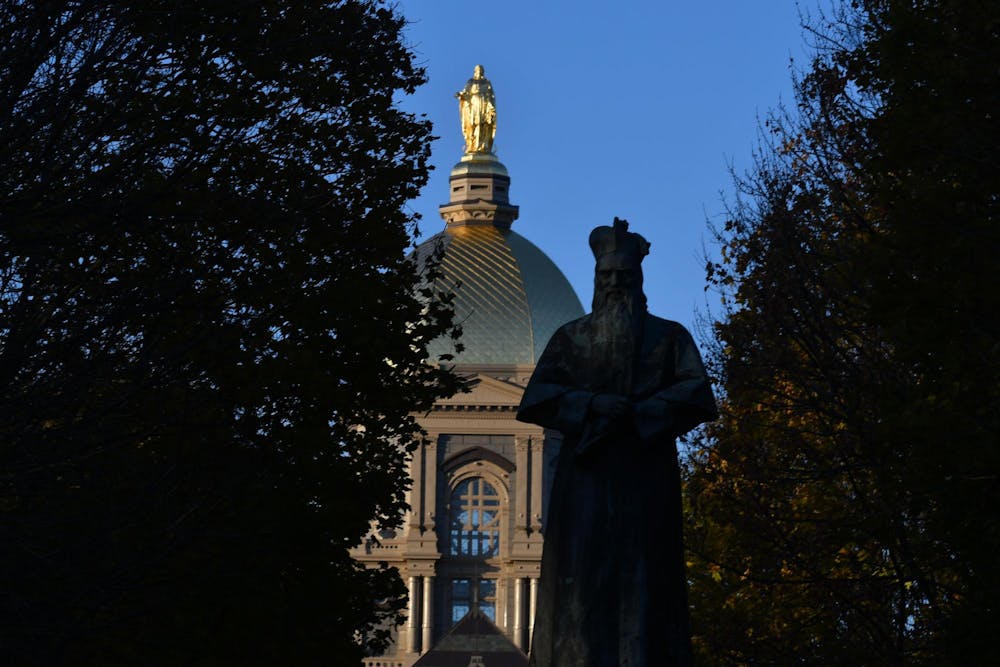Notre Dame again broke the record for its most competitive application cycle yet. The preliminary acceptance rate for both regular and early decisions was about 11% for the Class of 2028, down from 11.9% a year ago.
18,445 students applied via regular decision, with 1,600 students being admitted and roughly 2,200 students being waitlisted. 1,724 students were admitted in December via restrictive early action out of the 11,498 who applied.
Vice president for undergraduate admissions Micki Kidder said the University typically admits half of its incoming freshmen from the restricted early action pool and half from the regular decision pool. The admission rate for the regular decision pool was lower than restricted early action pool this year in part because the University receives a higher number of applicants for the regular decision timeline. Total applications increased 6% from last year.
The University did not require students to submit standardized test scores for the fourth year in a row after the policy was instituted during the COVID-19 pandemic. Kidder said 56% of all applicants did not submit test scores. Although more than half of this year’s applicants did not submit a test score, roughly one third of admitted students did not submit a test score. Kidder wrote in an email there was not a significant increase in the number of students who did not submit test scores from last year.
The University will remain test optional through the 2025 admission cycle. Kidder said that the policy past 2025 is “being evaluated and will be announced at a future date.”
When asked what the purpose of the test-optional policy is, Kidder referred to her September, 2022 statement in which she said the policy is meant to allow students to emphasize qualifications other than their test scores, “including rigor of high school coursework, intellectual curiosity and engagement both in and outside of the classroom.”
This year marked the first year in which Notre Dame, and universities across the country, were prohibited from considering applicants’ race, in accordance with a June supreme court ruling which deemed the practice unconstitutional.
When asked how the end of affirmative action affected this year’s admissions cycle, Kidder said only that “the University did not consider an applicant’s race when determining admissibility to the University of Notre Dame.”
Statistics regarding the number of students of color, as well as the number of international students, first-generation students, legacy students and low income students, will be released in late May, Kidder said.
The University matched with 83 Questbridge finalists, accounting for 2.5% of the admitted class. Last year, the University matched with 96 Questbridge finalists.
A “limited number” of students were invited to enroll in the Notre Dame-Holy Cross Gateway program in which students spend one year at Holy Cross College, while taking classes at Notre Dame, before transferring to Notre Dame their sophomore year if they maintain a 3.5 GPA. Kidder said the University anticipates 75 students to enroll in the program.
As of Tuesday afternoon, 543 students had confirmed their enrollment.
Kidder praised the admitted class for “their enthusiasm about Notre Dame’s distinct mission, servant leadership, academic preparation, demonstrated joy and commitment to their communities.”










